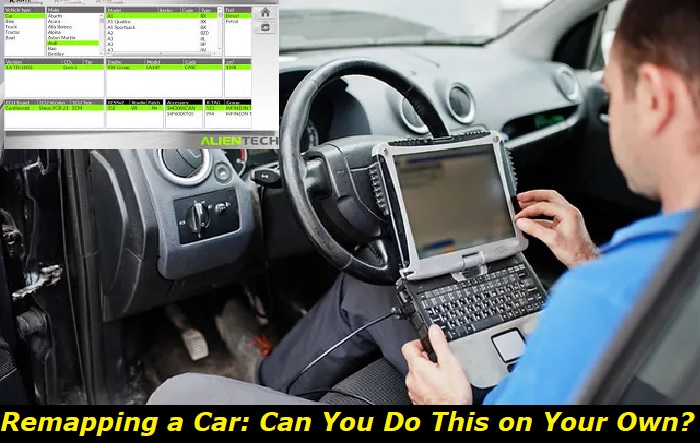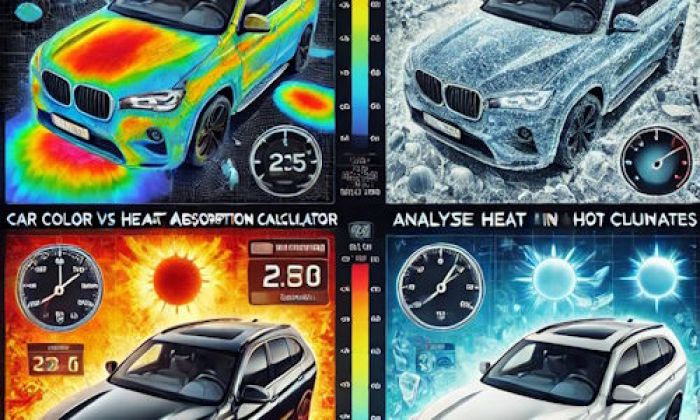Remapping with a laptop is not a DIY task because you need someone in the vehicle with you to help with operating the PC as you drive. This is called a live remap and it's considered the best way to attain accurate results. I'll elaborate on the live remapping process and treat other related topics as well.
Engine electrical problems highlights
- Level of urgency:high
- DIY inspection:possible but complicated
- DIY repairs:impossible
- Can you drive?yes, if it starts
- Price of repairs:$150 - $650
- If ignored:no-start, harsh work, warning lights
- Ways to fix:good scanning for codes, professional repairs

What Does a Remap Involve?
Your car's ECU runs algorithms in real time as you drive. The algorithms regulate all the parameters; such as air-fuel ratio, ignition timing, boost pressure, etc. A remap can tweak the settings that guide the algorithms.
You won't need to change the car's hardware. But a remap will be necessary to get the best out of any aftermarket performance parts you buy for the vehicle. It's worth noting that old model-year cars with outdated software can't undergo the process. Now, take a look at the downsides of the procedure below.
- Void its warranty.
- Raise its insurance premium.
- Reduce the engine's reliability.
Things To Consider Before Remapping
Prepare to exercise great caution while making adjustments. The areas that you may consider for remapping are the gearbox, transmission, fuel system, exhaust and intake systems, and suspension. Remember to inspect fundamentals like oil levels, fuel levels, and so on before you begin the process.
Make the tools you need available such as a remapping software application, a reliable laptop, and a chassis dynamometer (dyno) or rolling road.
Chassis dynamometers are devices that are utilized in measuring power, speed, or force when remapping or tuning your car. It has heavy metal rollers that turn when the car's wheels are moving.
You can use a dyno in place of test-tuning on a free road or an open field. Choose a spacious area (e.g. a field) to drive the car around freely in. The terrain should be smooth and free of obstruction, traffic, or people. You can choose to do a live remap at night when the road will be mostly free.
Note: Dynos cost tens of thousands of dollars to buy, so you'll most likely want to rent them instead.
Procedure for Remapping Your Car
A remap has to be performed with the aid of a PC using the steps below.
Step 1: Scan the Car for Error Codes
Use a diagnostic tool for checking error codes and make all the necessary repairs before starting the remap. Unplug the scanner's adapter after, so you'll be able to connect the programmer's cable to the car's OBD2 port. The other end of the cable will be plugged into your laptop.
Step 2: Run the Remapping Software Application
Open the application, select the car make and model, then set the ECU model. Proceed to read the ECU File and save it after.
Step 3: Begin Live Remapping
An assistant should be with you during this session. He or she will operate the laptop as you drive and must have the know-how for using the remapping software. Live remapping enables you to monitor fuel consumption and power as well as run diagnostics in real time.
The starting point could be a road sign. Tell your assistant to start the software capture as you drive. Your car should move gradually at the lowest revolutions per minute (RPM) while in gear two. The RPM reading should be noted.
Step 4: Step on the Gas Pedal/Accelerate
This step is necessary for raising the engine's RPM to measure how high it can go at that time. Floor the accelerator once you're past the starting point. Raise it to the redline at the wide-open throttle (WOT) before relaxing. Tell your assistant to save the readings as you hit the brakes and park.
Step 5: Repeat Step Four
Do this 3-4 times till the torque and horsepower (HP) numbers are consistent. Remember to let the car rest between each step to ensure high accuracy during capturing. Utilize the software application's overlay option to arrange and view multiple capture graphs at once.
Step 6: Start Altering the Map's Parameters
You can start tweaking once you achieve consistency. Adjust one or two parameters at a time and test each tuning. Ensure that you don't change both the map and fuel parameters at the same time.
Step 7: Repeat Step Six
Measure how high you can raise your car's HP and torque and horsepower of your car. Do so while noting all the data on delayed timing, lean mixture, and detonation in the repeated captures.
Step 8: Make the Final Adjustments
Use the data you got from the captures to make other necessary modifications until you're satisfied.
Step 9: Upload the New Map To the ECU
Start the application as you did in step two, then proceed to "write" the new file onto the ECU. Keep in mind that the upload may take a long period, so consider making a car battery voltage stabilizer available.
Step 10: Disconnect Your Laptop
This step comes after the upload is completed. Put the ignition in the "off" position and wait for a few minutes before starting the vehicle.
Other Remapping Methods
- You can buy preset flash devices and connect them to your car to upload a map.
- Many recent model-year cars can store multiple maps which vehicle owners can choose from.
- Some companies sell ECU maps or help you tweak maps you send to them.
Issues That May Arise After Performing DIY Remapping
It's just too risky to perform a DIY remap when you don't possess adequate technical knowledge of the process. Driving your car with the wrong settings or map can lead to various problems in the future as described below.
1) Being Unable To Return To Factory Settings
Newbies to ECU remapping can fall into the trap of using "plug and play" software apps that don't have the "undo" option. What if you don't like the results or want to change back to the vehicle's standard settings later? You'd have to hire the same professional services that you were avoiding earlier.
An expert will know your car's standard settings and how to perform a reset after. But you need to ensure that the software you purchase can undo the remaps it performs. Simply don't risk buying one that can't.
2) Flashing Check Engine Light (CEL)
Tweaking your car's ECU wrongly can trigger the diagnostic system to recognize the adjustment as an engine fault. This will make the CEL keep flashing until the settings are well-matched. Your car may even override the factory settings and switch to "safe mode", causing limitations in engine performance.
3) Overstressing the Engine
More power will mean more work for the engine. But you wouldn't want to overwork the system to the point of it damaging or experiencing failure.
4) Failed Performance Upgrade
Don't go experimenting with random selections on the remap software. Incompatible combinations can lead to serious engine damage. And having inadequate know-how may hinder you from achieving the best results.
5) Utilizing Outdated or Incompatible Software
There are many remapping software brands in the industry. This means you'll have several software packages to select from while shopping. Be careful of the ones that are offered for cheap prices. And it's advisable to go for a popular brand.
Remapping and tuning experts are familiar with the products that give great value for money. They also know the low-quality ones which are risky to buy. It's a good idea to ask for recommendations from those who have experience in using remapping tools.
The standard software packages are tested on live vehicles, so you can rest assured. And they offer periodic updates which meet the most recent vehicle standards and driving conditions. Some brands don't update their software packages after the first release. So avoid buying such software.
6) Problems with the Diesel Particulate Filter (DPF)
You can perform a remap for both diesel and petrol engines. But diesel cars are among the most remapped vehicles. Their DPFs make sure that the soot and ash produced in the vehicle aren't allowed to escape into the environment.
Remapping an ECU wrongly can cause issues for the DPF. You may start seeing black smoke coming out of your car's exhaust after some time. The incorrect settings will have to be rectified and the DPF replaced.
7) Incurring Costs To Fix the Problems Created
One can tell that having the above-mentioned issues will require you to spend money to fix them. And it can be a lot of money depending on the damage done and the need for replacement parts.
For example, a DPF replacement is very expensive and costs $2,000 to $4,000 on average. Going DIY may help you save some dollars, but the risks are significant.
Note: A remap at an auto repair shop can cost between $200 to $400.
Conclusion
Hiring a professional may be too expensive, but it's the safest and best way to have an ECU remap done. You'll be avoiding the possibility of complications from a failed procedure by taking your car to experienced technicians.
About the authors
The CarAraC research team is composed of seasoned auto mechanics and automotive industry professionals, including individuals with advanced degrees and certifications in their field. Our team members boast prestigious credentials, reflecting their extensive knowledge and skills. These qualifications include: IMI: Institute of the Motor Industry, ASE-Certified Master Automobile Technicians; Coventry University, Graduate of MA in Automotive Journalism; Politecnico di Torino, Italy, MS Automotive Engineering; Ss. Cyril and Methodius University in Skopje, Mechanical University in Skopje; TOC Automotive College; DHA Suffa University, Department of Mechanical Engineering






Add comment